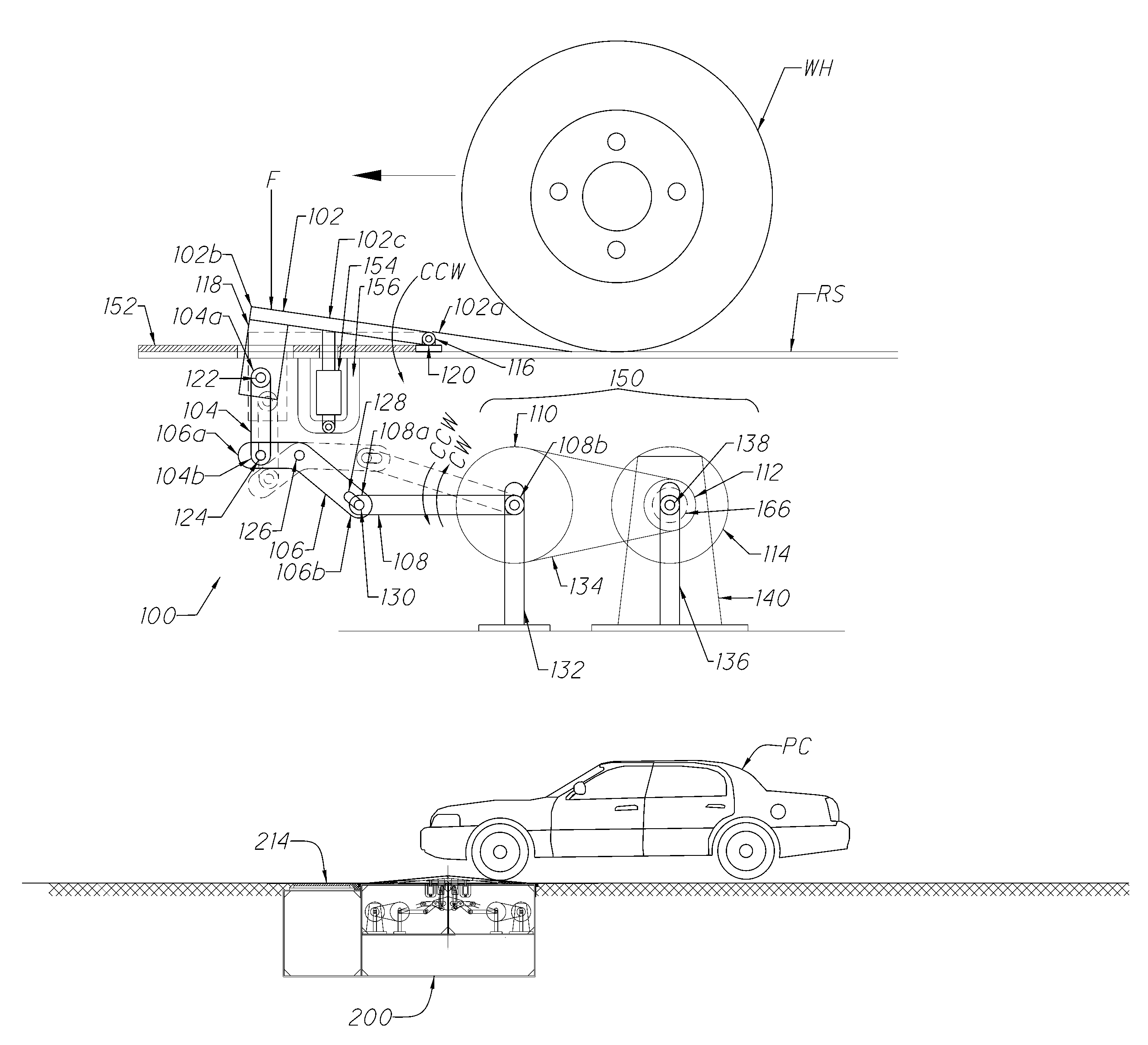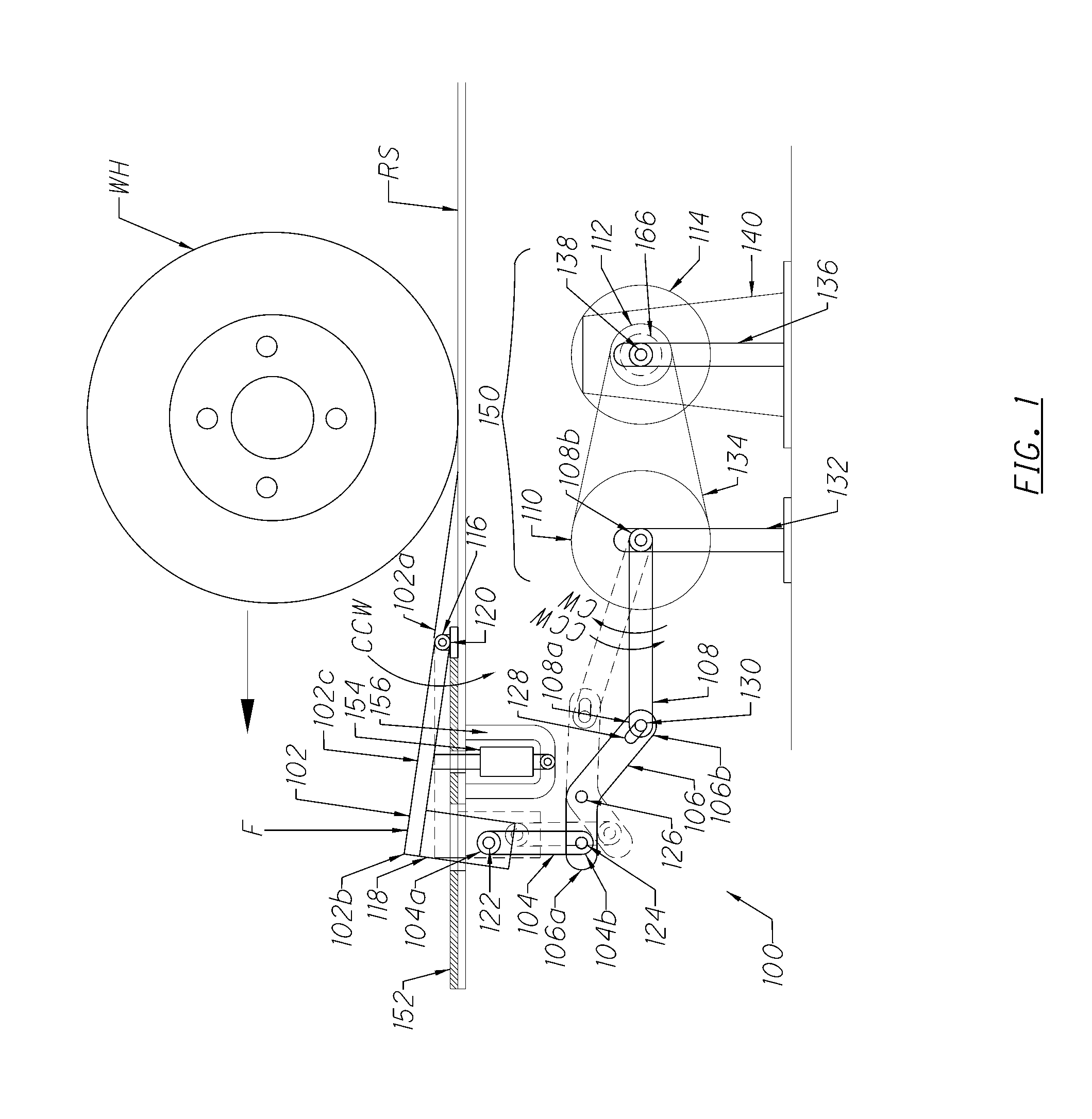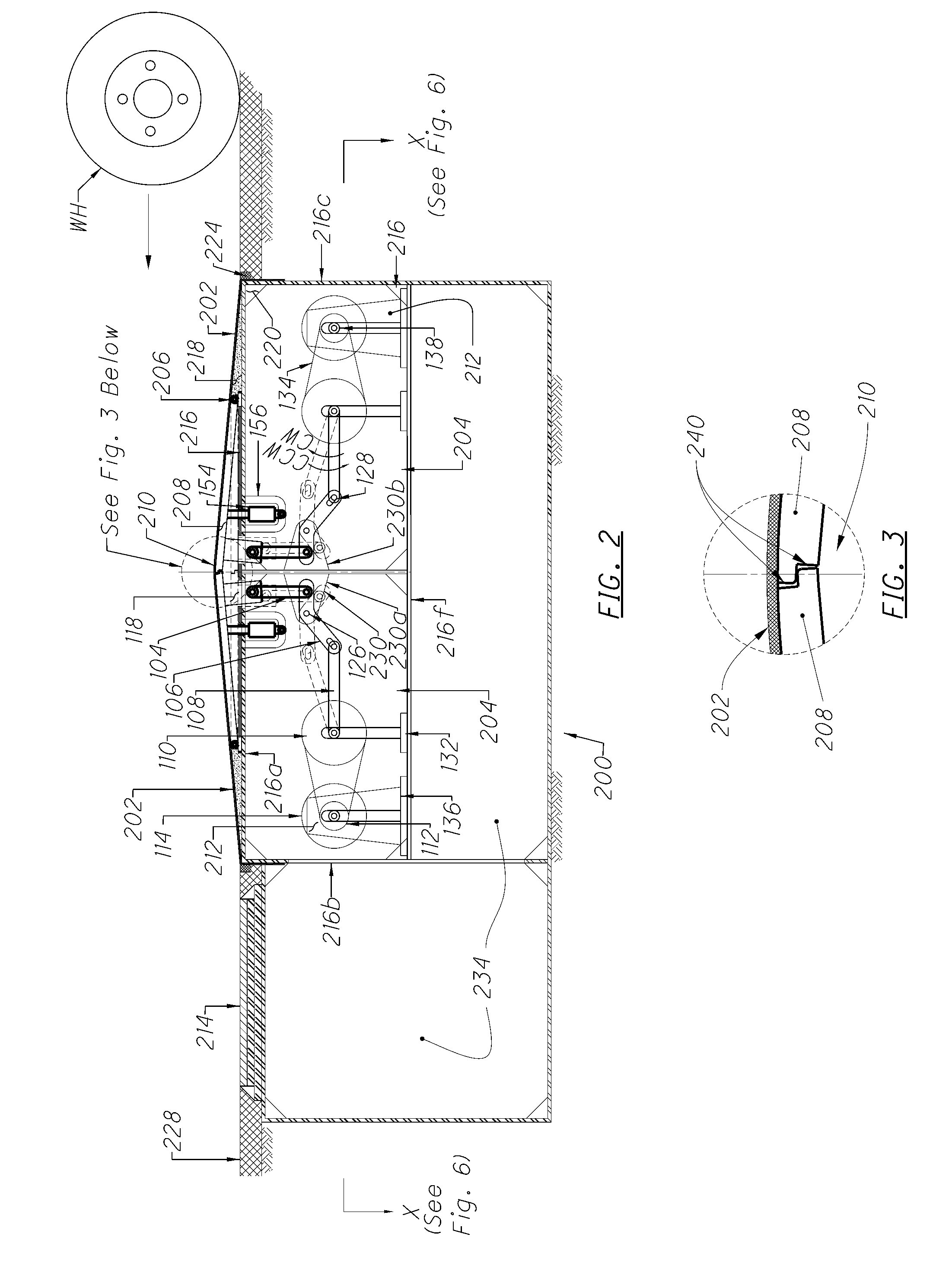Electrical generator apparatus, particularly for use on a vehicle roadway
a generator and vehicle technology, applied in the direction of electrical equipment, dynamo-electric components, dynamo-electric machines, etc., can solve the problems of inability to replace nearly as fast as they are being consumed, inability to use moving vehicles, and inability to meet the needs of moving vehicles, etc., to achieve efficient utilization and conservation of energy resources, reduce the demand load of the conventional power grid, and reduce the effect of consumption
- Summary
- Abstract
- Description
- Claims
- Application Information
AI Technical Summary
Benefits of technology
Problems solved by technology
Method used
Image
Examples
first embodiment
1. First Embodiment
[0049]A first embodiment of an inventive electrical generator apparatus is seen generally at 100 in FIG. 1. In this embodiment, the electrical generator apparatus 100 generally comprises a rotatable top portion exemplified by rotatable lever portion 102, a first linkage member exemplified by plunger bar 104, a second linkage member exemplified by leverage bar 106, a third linkage member exemplified by crank 108, a first wheel 110, a second wheel 112, a flywheel 114, and an electrical generator 140. These components 102-140 are operatively coupled to one another such that electrical energy can be generated when an external actuation force F is applied to the rotatable lever portion 102 by a wheel WH of a vehicle traveling on a roadway surface RS. Each component of the system will be described in detail below.
[0050]In the first preferred embodiment of the invention, the rotatable lever portion 102 has a first end 102a, a second end 102b, and an upper surface 102c. A...
second embodiment
2. Second Embodiment
[0065]A second embodiment of an inventive electrical generator apparatus is seen generally at 200 in FIGS. 2 and 4-6. In some respects, the second embodiment is similar to that of the first embodiment. Moreover, some parts are common to both such embodiments. For the sake of brevity, the parts that the second embodiment of the electrical generator apparatus 200 has in common with the first embodiment of the electrical generator apparatus 100 will not described in conjunction with the second embodiment because these components have already been explained in detail above. Furthermore, in the interest of clarity, these components will be denoted using the same reference characters that were used in the first embodiment.
[0066]However, it is evident from FIGS. 2 and 4-6 that the second embodiment of the electrical generator apparatus 200 also differs in several important respects from that of the first embodiment of FIG. 1. The unique features of the second embodiment...
third embodiment
3. Third Embodiment
[0087]A third embodiment of an inventive electrical generator apparatus is seen generally at 400 in FIG. 13. The third embodiment is similar to that of the first embodiment, and in some respects, it is also similar to that of the second embodiment. Moreover, some parts are common to all three embodiments. For the sake of brevity, the parts that the third embodiment of the electrical generator apparatus (400) has in common with the preceding two embodiments of the electrical generator apparatus (100, 200) will not described in conjunction with the third embodiment because these components have already been explained in detail above. Furthermore, in the interest of clarity, these components will be denoted using the same reference characters that were used in the first two embodiments.
[0088]However, it is evident from FIG. 13 that the third embodiment of the electrical generator apparatus (400) also differs in several important respects from that of the first two em...
PUM
 Login to View More
Login to View More Abstract
Description
Claims
Application Information
 Login to View More
Login to View More - R&D
- Intellectual Property
- Life Sciences
- Materials
- Tech Scout
- Unparalleled Data Quality
- Higher Quality Content
- 60% Fewer Hallucinations
Browse by: Latest US Patents, China's latest patents, Technical Efficacy Thesaurus, Application Domain, Technology Topic, Popular Technical Reports.
© 2025 PatSnap. All rights reserved.Legal|Privacy policy|Modern Slavery Act Transparency Statement|Sitemap|About US| Contact US: help@patsnap.com



